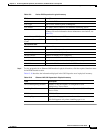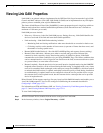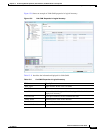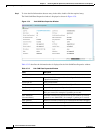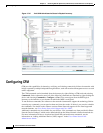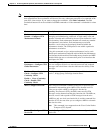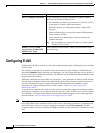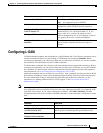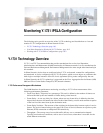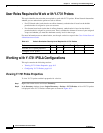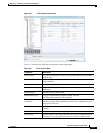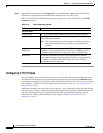
15-21
Cisco Prime Network 4.0 User Guide
OL-29343-01
Chapter 15 Monitoring Ethernet Operations, Administration, and Maintenance Tool Properties
Configuring L-OAM
Configuring L-OAM
L-OAM commands monitors and troubleshoots a single Ethernet link. The following commands can be
launched from the inventory by right-clicking a L-OAM node and selecting Commands. Before
executing any commands, you can preview them and view the results. If desired, you can also schedule
the commands. The table below lists the L-OAM commands.
To run the these commands, the software on the network element must support the technology. Before
executing any commands, you can preview them and view the results. If desired, you can also schedule
the commands. For details on the software versions Prime Network supports for the listed supported
network elements, see Cisco Prime Network 4.0 Supported Cisco VNEs.
Additional commands may be available for your devices. New commands are often provided in Prime
Network Device Packages, which can be downloaded from the Prime Network software download site.
For more information on how to download and install DPs and enable new commands, see the
information on “Adding Additional Device (VNE) support” in the Cisco Prime Network 4.0
Administrator Guide.
Note You might be prompted to enter your device access credentials while executing a command. Once you
have entered them, these credentials will be used for every subsequent execution of a command in the
same GUI client session. If you want to change the credentials, click Edit Credentials. The Edit
Credentials button will not be available for SNMP commands or if the command is scheduled for a later
time.
Command Description
Enable > Global E-LMI Enable Ethernet LMI globally.
Note Not supported on Cisco IOS XR.
Enable On Interface If E-LMI is disabled globally, you can use this
command to enable E-LMI on specific interfaces.
Configure MultiPoint To MultiPoint or
Point To Point EVC
UNI count indicates the range of the Unified network
interface(UNI) is 2 to 1024; the default is 2. If you
enter a value of 2, you have the option to select
point-to-multipoint service. If you configure a value of
3 or greater, the service is point-to-multipoint.
Configure UNI in an Interface
Configure Service Instance Vlan Id on
Interface
Specify the service interface ID (Per-interface Ethernet
service instance identifier that does not map to a
VLAN).
Command Description
Assign Template on Interface Assign template name
Configure MultiPoint To MultiPoint
or Point To Point EVC
Configure OAM (L-OAM) on any full-duplex
point-to-point or emulated point-to-point Ethernet link.
Enable OAM on Interface
Disable OAM on Interface
Enable or disable OAM on the specified interface.



